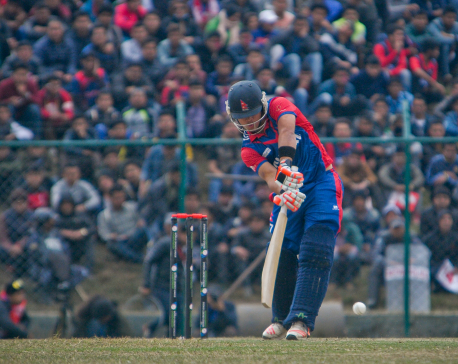
OR
Opinion
Architect of Nepal or just Kathmandu?
Published On: December 11, 2023 07:45 AM NPT By: Aachal Pokharel

More from Author
In the crisp, promising days of April, I achieved a long-sought milestone: I wrapped up my bachelor's thesis in architecture. That moment marked the culmination of a five-year journey through the rigors of architecture school – a saga filled with hard work, boundless creativity, unwavering passion, and sleepless nights. As this chapter of my life concluded, an enigmatic question began to haunt me: Am I now an architect? And if so, for whom? Am I an architect of Nepal, or does my realm extend merely to the confines of Kathmandu?
When my friend and I were offered a project, we hesitated, unsure if we could do justice to the design, given our limited experience confined to the projects within the Kathmandu Valley. How could we start a project in the mountainous regions of Nepal as fresh graduates? Our doubts lingered even though we had gained diverse experiences in design through freelancing, internships and design studio projects.
Nepal's diverse terrain is a canvas adorned with a rich tapestry of architecture, yet my exploration remained confined to a singular region. My bachelor's thesis delved into Mithila art and culture, where I both designed and researched topics deeply connected to Mithila's cultural heritage. While immersing myself in the intricacies of Mithila architecture for my Terai-based thesis, a profound realization unfolded—the limitations of our resources in comprehending traditional architecture became apparent.
This revelation struck me deeply, particularly considering the cultural significance Mithila holds in Nepal. Despite my earnest attempts to broaden my horizons, I encountered formidable barriers within my own country. The challenges of limited resources and accessibility compelled me to travel to India in search of more valuable insights. However, even there, my quest was met with a sense of dissatisfaction. It was disheartening to discover that the books elucidating the cultural significance of Mithila were only found and accessible in foreign lands. This underscored the poignant reality of the gaps in our domestic resources, urging me to reflect on the necessity of cultivating a more comprehensive understanding of our own rich architectural heritage.
As I contemplated the unexplored architectural treasures across Nepal's different regions, I realized that my mission extended beyond mere design; it became a quest to honor our nation's cultural diversity by creating spaces that resonate with its people. To truly serve the diverse communities of Nepal, I recognized the need to overcome these barriers, but I grappled with how to proceed.
To my fellow architecture graduates from Nepal, I pose the same ponderous inquiry: Are we architects of Nepal or merely custodians of Kathmandu's architectural landscape? The answer remains elusive. I, for one, find myself at the crossroads, for, apart from my bachelor's thesis, I've had a scant opportunity to design beyond the boundaries of the Kathmandu Valley during my architectural education.
This glaring realization has spurred another question: Why? Is it because we were denied studio projects outside Kathmandu? Can I, in good faith, hold my academic institution accountable for this limitation when students express concerns about site distances? And regarding the concerns my fellow classmates have voiced, such as the distance to the site, the cost of transportation, or the challenges of time management – even when the sites were located on the fringes of Kathmandu itself – should we criticize them for these concerns, knowing the relentless time constraints we face during submissions and the academic semester?
Is it justifiable to point fingers at those who shape our curriculum, or the curriculum itself, when most students seldom take the time to delve deeply into its pages, preoccupied as they are with past examination questions? Is the examination system, then, the culprit? Frankly, I cannot lay blame solely on any party involved, as I see the dedication and effort of everyone involved, yet progress and change remain elusive.
These questions haunt me, and I'm left grappling with them, acutely aware of our research capabilities that would enable us to undertake projects in various regions of Nepal. Still, I find myself unsatisfied. How could I be content when my mind teems with inquiries every day? Why has the focus of architecture been fixated on Kathmandu alone? From the annals of architectural history to contemporary design projects, why not Lamjung, Janakpur or any other place? Why does our exploration of traditional Nepali architecture seem limited to a singular style? Why are only selected electives dedicated to different architectural typologies within Nepal, while these remain absent from the core design studio curriculum? Where is the guidance for those keen to explore the diverse facets of Nepali architecture? Are we, as students, willing to take risks and step beyond our comfort zones, or is our comfort zone indeed constraining us?
These are the questions that circle in my mind, an endless loop I am ensnared within. And as I wrestle with these concerns, I dread answering the ultimate question: Am I equipped to be an architect for the global stage when I have yet to find the answer as to whether I am prepared for Nepal?
I've embarked on educational tours that exposed me to different areas, but is that sufficient? Can we, as architects, envision ourselves practicing outside of Kathmandu if it's not our hometown? While architecture schools have indeed imparted invaluable knowledge and skills in design, I yearn for the opportunity to explore the diverse architectural tapestry within this remarkable country.
My hope remains undimmed, for I anticipate a remarkable journey ahead. With optimism, I envisage an educational landscape where every student can immerse themselves in the rich tapestry of Nepali architecture, discovering not just bricks, but stones as primary elements. I yearn to see a realm where adobe and mud are the subjects of exploration, where those delving into vernacular architecture receive the guidance they need. I aspire to witness a flourishing creativity, not merely in design, but also in the choice of materials.
I dream of a future where my juniors' stride down diverse paths, exploring myriad design typologies. A future where the curriculum casts a wider net, where faculty imparts a comprehensive, inclusive knowledge, and where the architecture of Nepal extends its reach to encompass a broader sphere. So, when confronted with that question once more – "Are we architects of Nepal or just Kathmandu?" – I yearn for the day when my response can be unequivocal: We are architects prepared for the global stage, equipped to shape the world through our diverse, boundless creativity.
You May Like This

Outreach Nepal lifts Nepal Ice AAN Futsal
KATHMANDU, May 13: Outreach Nepal has lifted the first ever Nepal Ice AAN Futsal Tournament 2018 defeating Media Basket by a... Read More...

Nepal vs Kenya: Five crucial things Nepal looks for second match
KATHMANDU, March 12: Nepal is taking on Kenya on Monday in the second match of the ICC World Cricket League... Read More...

SCOPE Nepal provides foil blankets to Nepal Army
KATHMANDU, Jan: SCOPE Nepal, an NGO working in peace, security, environment and social justice, handed over 378 emergency foil blankets to... Read More...







Just In
- NRB to provide collateral-free loans to foreign employment seekers
- NEB to publish Grade 12 results next week
- Body handover begins; Relatives remain dissatisfied with insurance, compensation amount
- NC defers its plan to join Koshi govt
- NRB to review microfinance loan interest rate
- 134 dead in floods and landslides since onset of monsoon this year
- Mahakali Irrigation Project sees only 22 percent physical progress in 18 years
- Singapore now holds world's most powerful passport; Nepal stays at 98th












Leave A Comment